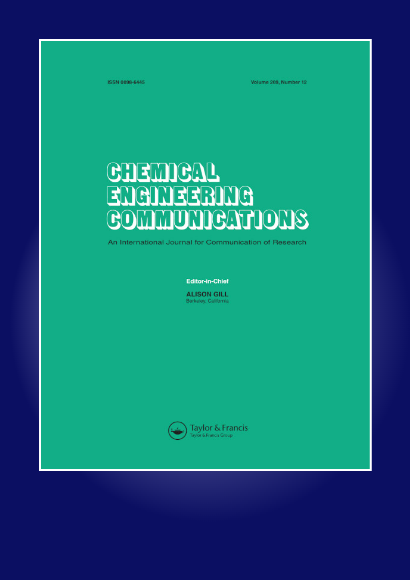Curcuminoid extraction from rhizomes of Curcuma longa via aqueous two phases system
IF 1.9
4区 工程技术
Q3 ENGINEERING, CHEMICAL
引用次数: 0
Abstract
The extraction of curcuminoids [curcumin (C21H20O6, CUR), demethoxycurcumin (C20H18O5, DMC), and bisdemethoxycurcumin (C19H16O4, BDMC)] from Curcuma longa rhizomes was investigated using an aqueous two-phase system (ATPS) with ethanol/salt. The optimized conditions for the extraction process were determined by a central composite design to be an ethanol concentration of 13.6%, an ammonium sulfate concentration of 33.2%, and a temperature of 66.8 °C. Under these conditions, the highest yield of 97.9% was achieved, accompanied by a notable antioxidant activity of 84.38%. The experimental data exhibited good agreement with a second-order kinetic model, as confirmed by the evaluation of the coefficient of determination (R2), normalized standard deviation, and average relative error.双水相萃取法提取姜黄根茎中的姜黄素
采用乙醇/盐双水相体系(ATPS)研究了姜黄根茎中姜黄素[姜黄素(C21H20O6, CUR),去甲氧基姜黄素(C20H18O5, DMC),双去甲氧基姜黄素(C19H16O4, BDMC)]的提取工艺。通过中心复合设计确定了提取工艺的最佳条件为乙醇浓度13.6%,硫酸铵浓度33.2%,温度66.8℃。在此条件下,产率达到97.9%,抗氧化活性达到84.38%。通过测定系数(R2)、标准化标准差和平均相对误差,证实了实验数据与二级动力学模型吻合较好。
本文章由计算机程序翻译,如有差异,请以英文原文为准。
求助全文
约1分钟内获得全文
求助全文
来源期刊

Chemical Engineering Communications
工程技术-工程:化工
CiteScore
5.50
自引率
4.00%
发文量
80
审稿时长
6 months
期刊介绍:
Chemical Engineering Communications provides a forum for the publication of manuscripts reporting on results of both basic and applied research in all areas of chemical engineering. The journal''s audience includes researchers and practitioners in academia, industry, and government.
Chemical Engineering Communications publishes full-length research articles dealing with completed research projects on subjects such as experimentation (both techniques and data) and new theoretical models. Critical review papers reporting on the current state of the art in topical areas of chemical engineering are also welcome; submission of these is strongly encouraged.
 求助内容:
求助内容: 应助结果提醒方式:
应助结果提醒方式:


